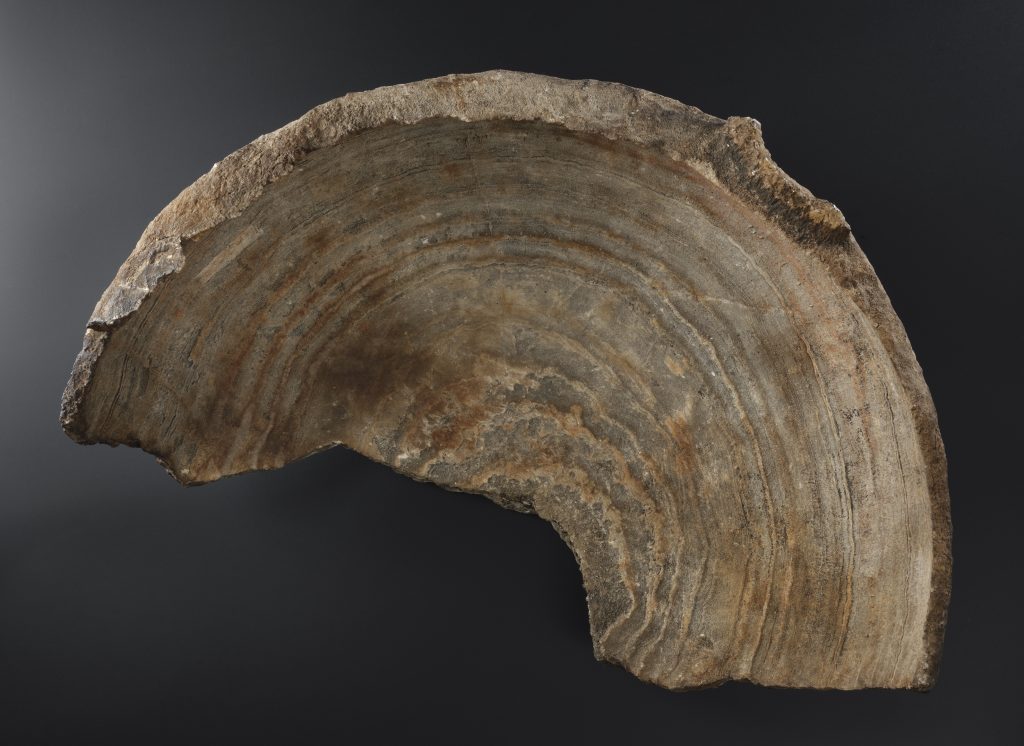It’s a long way from the sands of Egypt to the Forth valley, but one long-forgotten object in our museum made exactly that journey over 1800 years ago. A remarkable burial urn of exotic Egyptian stone once held the ashes of a powerful Roman at Camelon, just north of the Antonine Wall. It’s been in our collections since the 1850s – but languished, forgotten, in the stores. How could such an exotic migrant be overlooked?
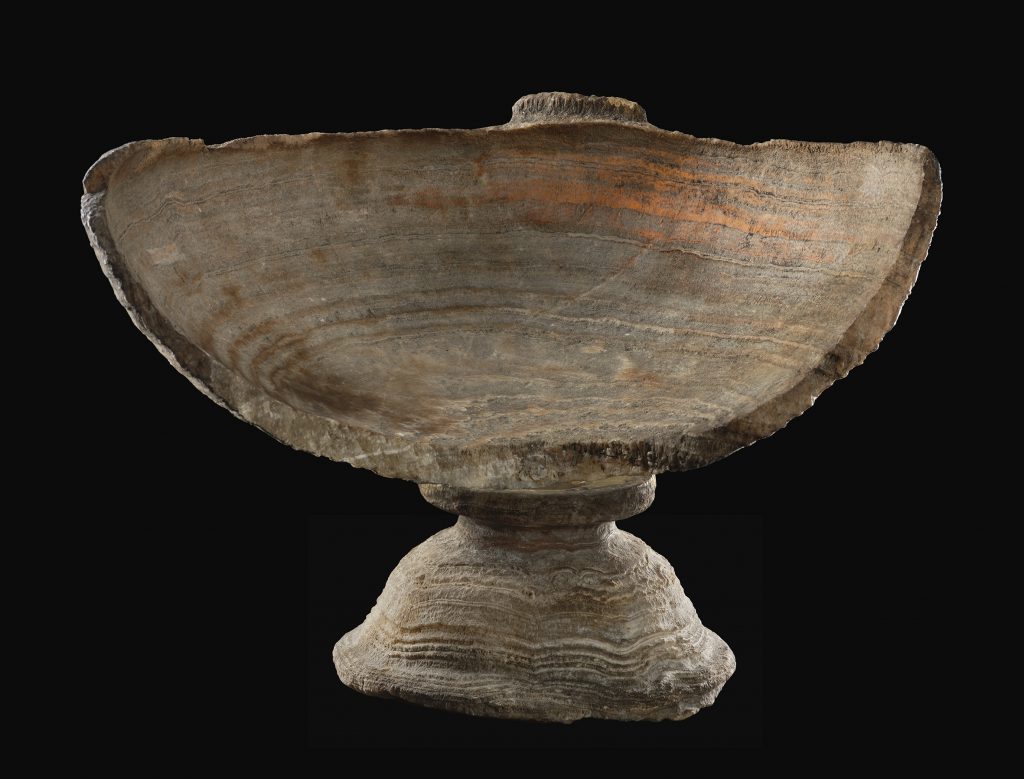
Our story starts with a railway. In the 19th century the country went railway-mad, as tracks were laid all across the land for this new technology. Fortunes were made and lost as investors speculated and the network grew. Where the railway went, the Romans had often been before – good transport routes don’t change much over time. A good example is the Edinburgh-Glasgow train line, which follows Rome’s frontier in Scotland, the Antonine Wall, for much of its length.
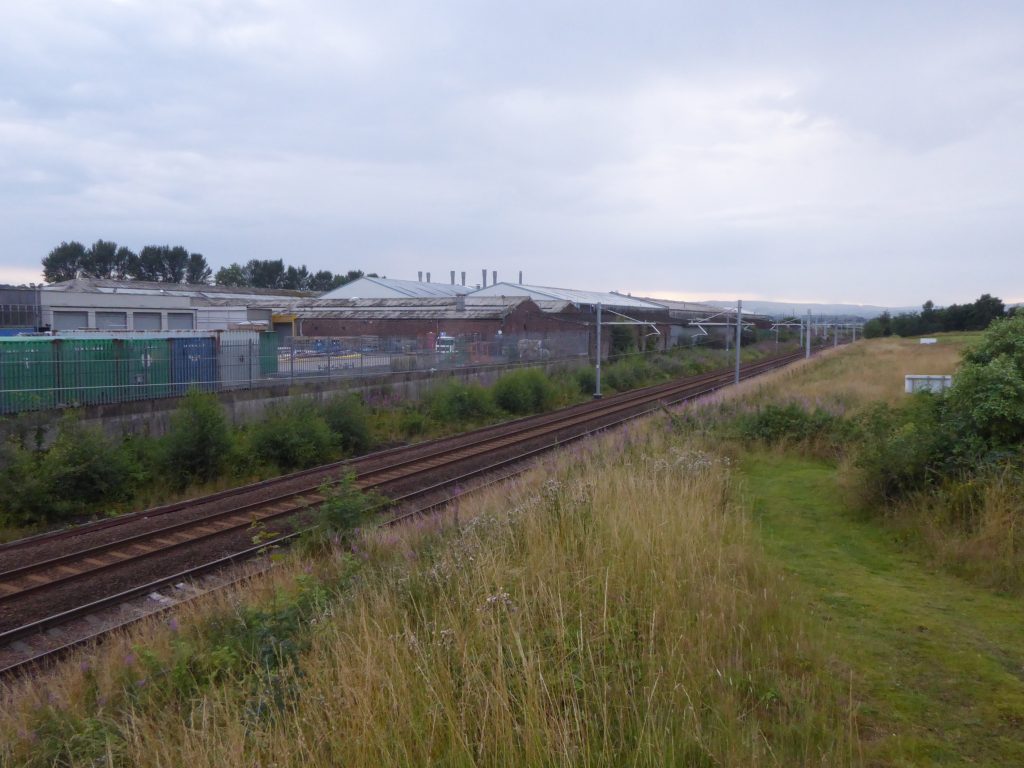
To the north of this Wall, just north of Falkirk, lies Camelon – a major Roman military base facing the unconquered northern tribes. In 1849, a railway line cut across it. From its trail of destruction, we have only tantalising references to lost finds. But one thing survives – “a very fine alabaster urn, containing a quantity of calcined bones”, broken by the pickaxes of the navvies. The fragments ended up in the hands of different collectors, with the largest two making their way to the National Museum of Antiquities of Scotland, one of the ancestors of our museum.
Early antiquarians were amazed by the piece, “a work of much beauty”, and it was on public display for decades. But in 1901, the Keeper of the Museum, Joseph Anderson, condemned it in a footnote to an article – it “presents no features which suggest Roman workmanship”. With that, it was banished to the stores for over a century.
Museum stores are great places to ferret around in. Exploring one of the darker corridors in our old store in Leith, I came across a time-faded box labelled “Alabaster urn”. A quick glance revealed a remarkable object, one I’d never seen the like of before. But time was limited – the store needed to be emptied as we moved to new premises, and I made a mental note to return to this curious box.
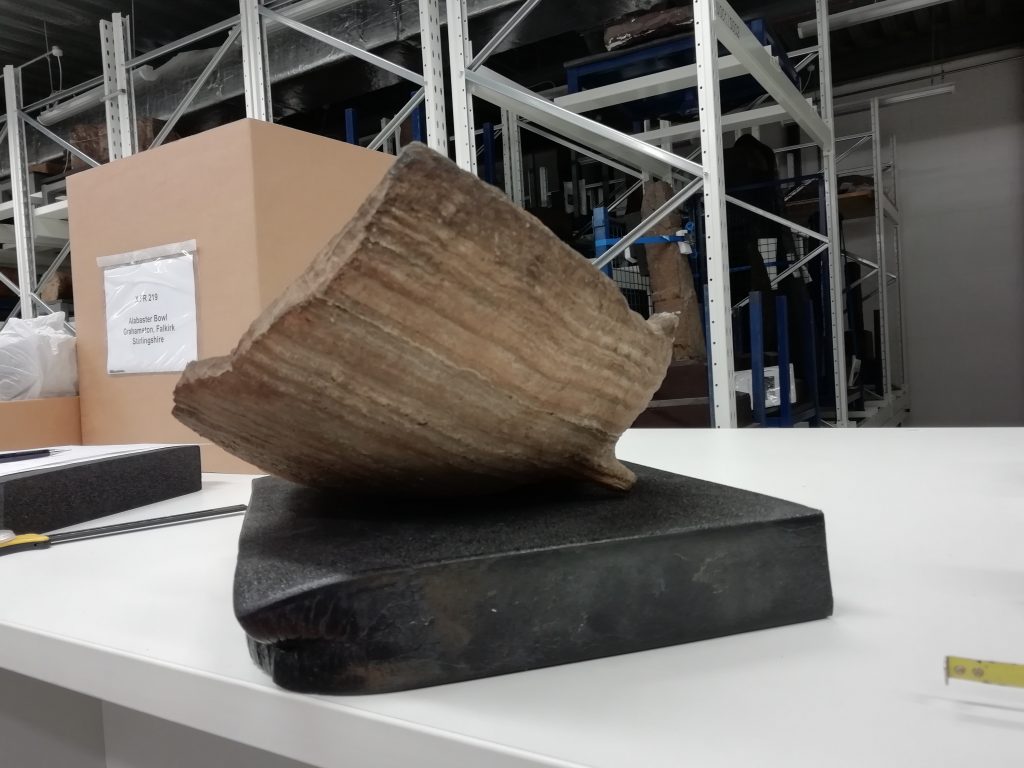
In the much more salubrious surroundings of our Collections Centre at Granton, I could unpack the box at leisure. There were two pieces, one broken, one complete. Taking advantage of a passing geologist, I discovered that the stone was not alabaster (calcium sulphate) but travertine (calcium carbonate), another exotic rock which is soft enough to be carved.
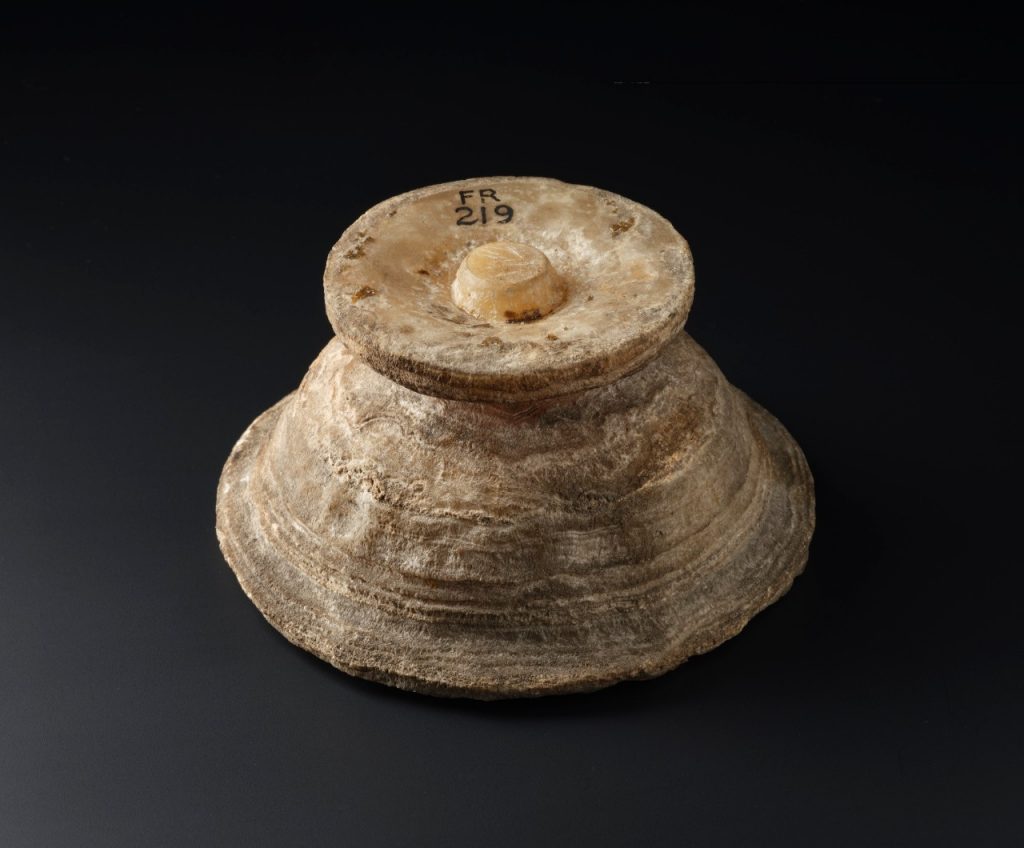
The urn’s outer surfaces are rather water-worn from 1800 years in damp soil, but on a few areas you can see the original gleaming polished surface, with its beautiful golden hue. This was once a spectacular item.
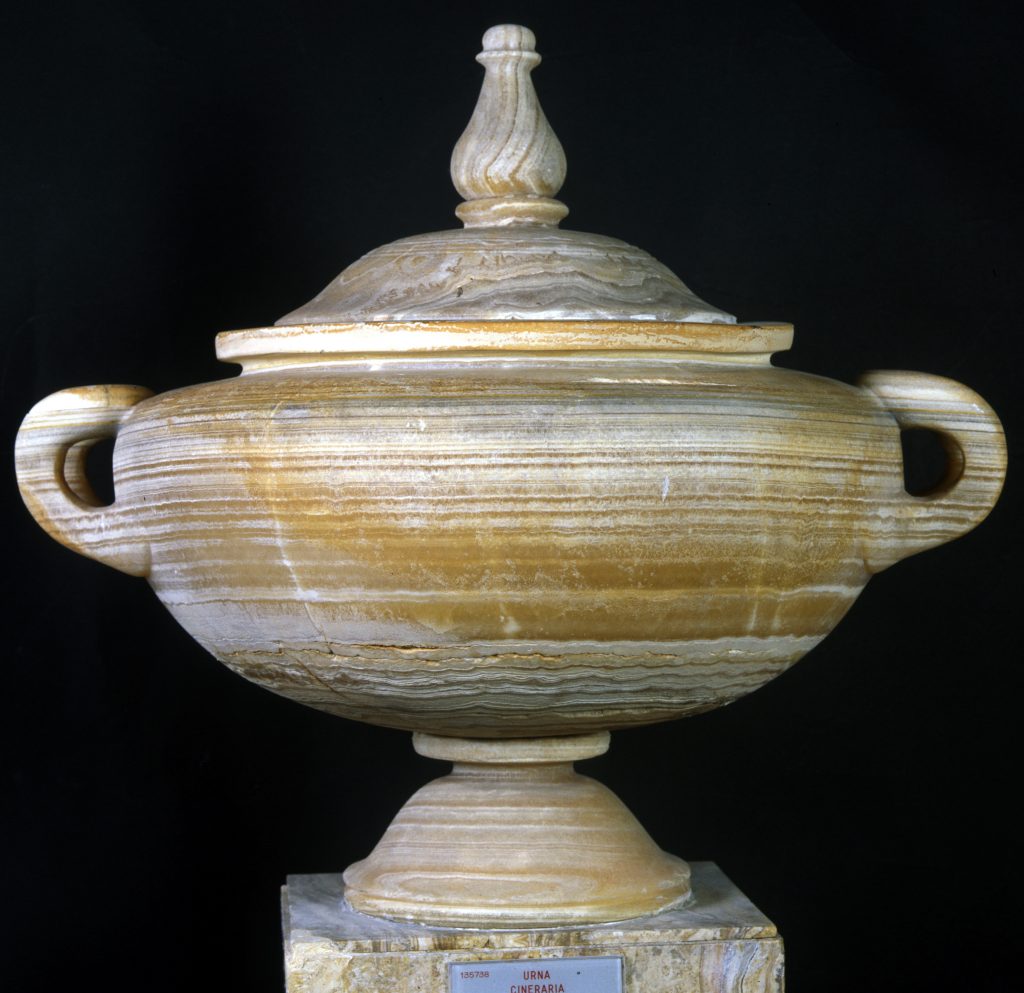
The next stop was the library, hunting for other examples. Only the base and bowl survive of ours, but a perfectly-preserved urn from Rome shows how it would have looked, with an ornate lid and paired handles.
The raw material came from Egypt, whose deserts produce some wonderfully colourful stones. These were popular for burial urns because of their beauty, but also for their Egyptian link – the Romans were fascinated by Egyptian beliefs about death and the afterlife, just as we still are today. The blocks of raw stone were quarried in Egypt and shipped to Rome, where they were carved into urns. These were bought by the Roman elite – even emperors and their households used Egyptian funerary urns.
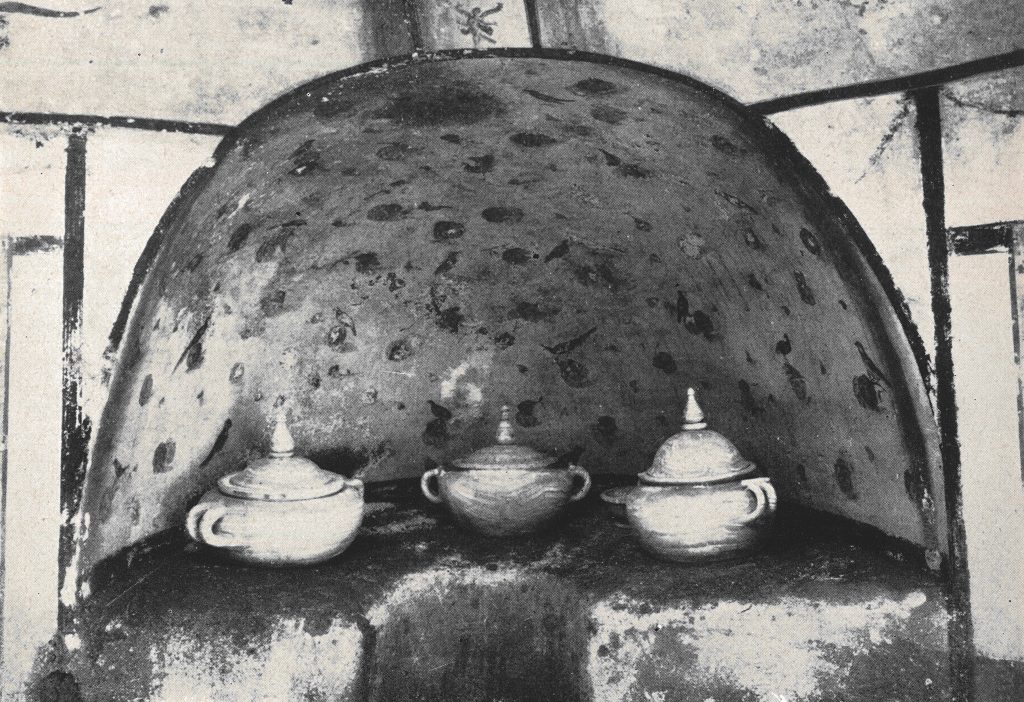
But such urns are very much a Mediterranean habit. Barely any come from the cold northern edges of the Roman world: there’s one example from northern France, and one from London, but that’s all the others we know of from the frontier zones of the Roman empire. Our urn is a rare migrant indeed.
So who brought it here? Well, the Romans planned for death. Soldiers put part of their salary into a burial club to pay for their funeral. The emperor Severus even took his funerary urn on campaign with him. The original owner of our urn was similarly well-prepared. He or she must have been a member of the Roman elite – probably the commander of this powerful Roman outpost, or one of his close family. We can’t tell any more – the bones are long-lost – but the urn preserves something of their memory.
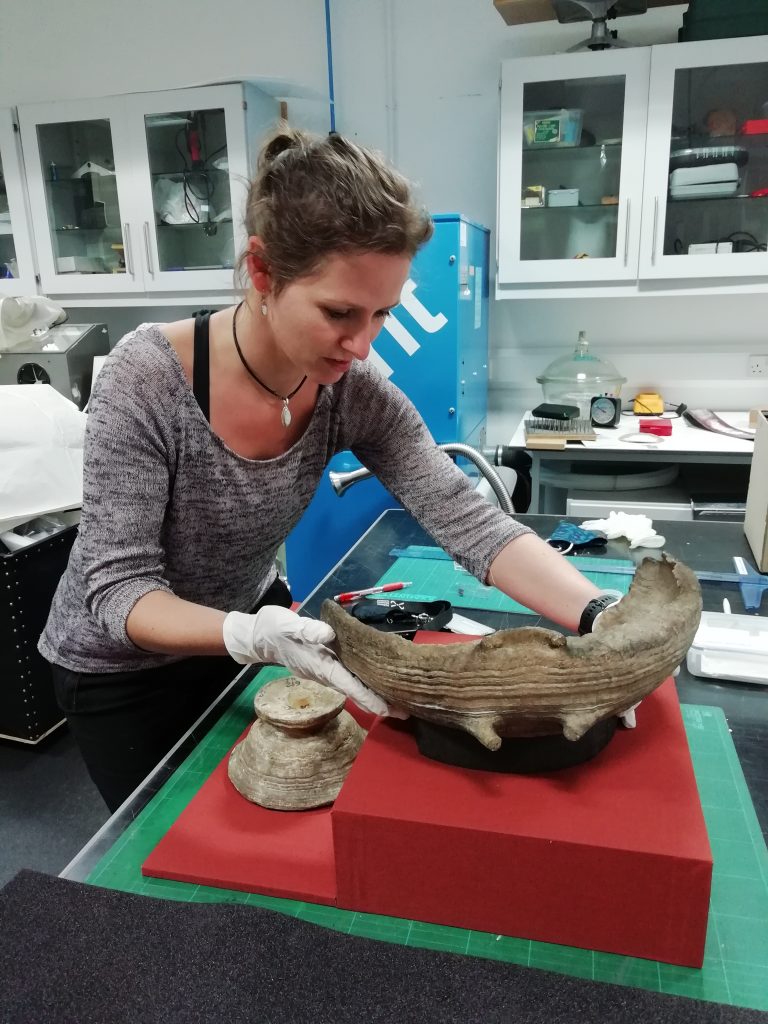
Now, at last, the urn will go back on display, more than a century after it was last seen. Our conservators have been getting it ready for its new public; the fragmentary bowl won’t stand safely on the base, but they’ve made a mount to show how they once fitted together.
It’ll be star of the show (in my entirely unbiased view) in a wee display we’re mounting to celebrate the reopening of the museum after its Corona-closure. The display highlights new acquisitions and new ideas – or in this case, new ideas about a rather old and neglected acquisition. From Egypt to Rome to Camelon. From the railway cutting, to the display case, to a cardboard box, and now back in the public gaze. It’s quite a journey.
But where are the missing bits? Do they still survive? If you live near Falkirk, keep an eye on the antique shops, or your granny’s mantelpiece. And if you see any interesting stones, do let me know.
